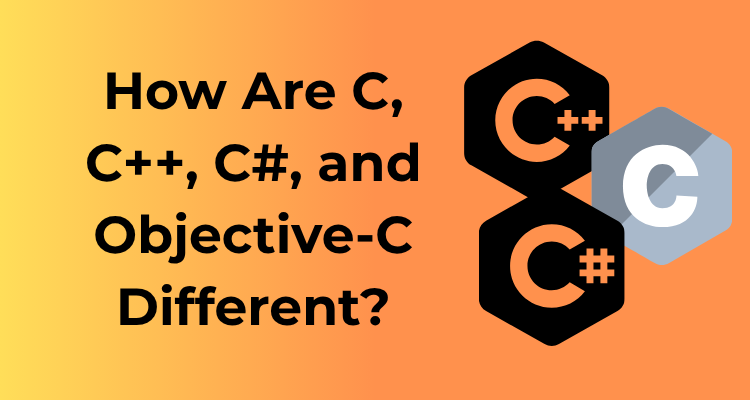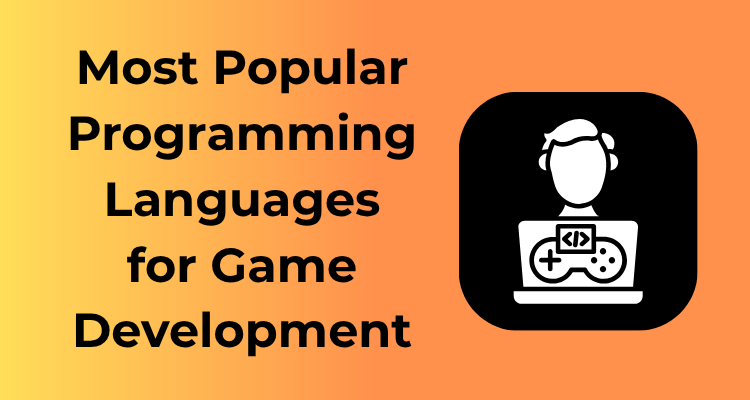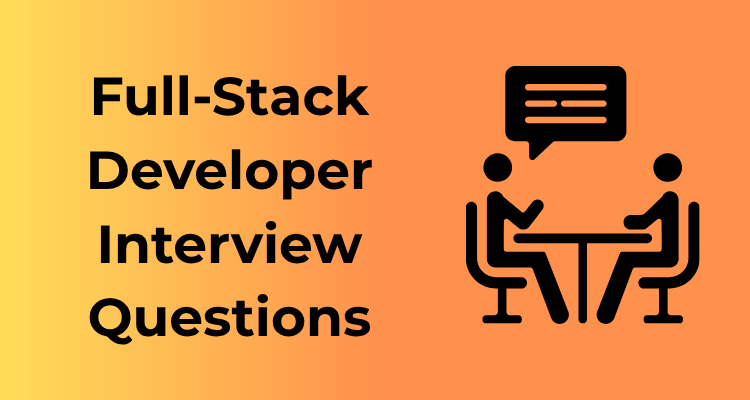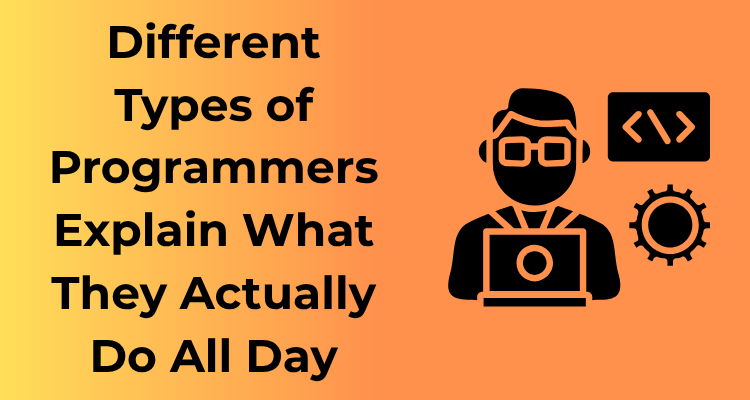Let’s face it: the phrase “learning to code” sounds simple, almost like picking up an instruction manual and following a few steps. But what does it actually mean, especially if you’re completely new to the world of programming? Spoiler alert: it’s much more than just typing words into a computer!
Defining “Learning to Code”
First off, “learning to code” isn’t one-size-fits-all. For beginners, it usually refers to understanding the foundational concepts of programming and how computers interpret written instructions. Instead of mastering everything at once, newbies typically start small, focusing on specific skills or tasks such as:
- Writing simple programs (like creating a calculator).
- Understanding syntax and logic (think of this as the grammar and rules of coding).
- Learning how to debug – because mistakes happen, a lot.
- Building familiarity with basic tools like code editors and version control systems.
At its core, learning to code for a beginner means not just writing code, but also understanding why it works (or doesn’t). It’s about cultivating the kind of problem-solving mindset you need to tackle complex challenges.
It’s More Than Just Memorizing
Unlike memorizing a script, coding requires you to think like a detective. Your job is to figure out how to break problems into smaller steps, apply logic, and then translate those steps into a programming language. For instance:
- Want to make a game character jump? First, break down the movement into inputs, physics, and graphics.
- Next, turn each idea into code snippets, using the rules and syntax of your programming language.
- Finally, test and debug. (Get ready to fix lots of bugs!)
This step-by-step process might sound intimidating, but trust me, once you get into the groove, it becomes second nature. Plus, the sense of satisfaction when your code finally works? It’s priceless!
Don’t Worry About Becoming an Expert Right Away
One common mistake beginners make is putting pressure on themselves to “master” coding in days or weeks. But learning to code is more of a journey than a destination. Beginners often start by grasping the basics and eventually grow by layering more complex knowledge on top of that foundation.
For instance, you might initially learn how to write simple commands in Python. Over time, as you feel more confident, you could dive deeper into web development, data science, or even artificial intelligence. Each new step builds on the basics you learned as a beginner.
Tracking the Time Investment Based on Learning Goals
Learning to code is like setting out on a road trip: your destination determines the time and effort required to get there. The amount of time you’ll need to invest depends heavily on your goals. Let’s break it down together so that you can plan your journey with precision and confidence.
1. Understanding Your Specific Learning Goals
When someone says they want to “learn to code,” that can mean a variety of things:
- Learning enough to build basic websites.
- Dabbling in code to automate daily tasks.
- Advancing to a professional level as a software developer.
- Specializing in fields like data science, AI, or game development.
These end goals directly impact the amount of time you’ll need to dedicate. Think of your goals as your roadmap.
2. Estimating Time for Common Goals
How much time should you allocate for different objectives? Here’s a friendly breakdown based on popular learning goals:
- Basic Web Development: Interested in creating a personal blog or portfolio website? With focused learning, you can pick up the basics of HTML, CSS, and even some JavaScript in 2 to 3 months.
- Programming for Automation: Want to write small programs, like automating tasks or analyzing data? Learning a beginner-friendly language like Python can take about 4 to 6 months of consistent part-time study.
- Professional Coding (e.g., Full-Stack Development): For those aspiring to work as developers, you’ll need to go deeper, covering both front-end and back-end skills. Expect to invest 9 to 18 months, whether through self-study or a coding bootcamp.
- Specialized Fields: Advanced goals like data science or machine learning will require a stronger foundation in coding AND math. These can take 1 to 2+ years depending on your pace.
3. Full-Time Study vs. Part-Time Learning
Time investment also depends on your schedule. Are you committing to coding full-time, or are you balancing it with work or other responsibilities? Here’s how the time commitment plays out:
- Full-Time Immersion: Studying coding for 6–8 hours a day, every day, will accelerate your progress dramatically. Many people in bootcamps go this route and achieve job-ready skills in 6 months or less.
- Part-Time Learning: For those juggling other commitments, dedicating 1–2 hours daily or a few evenings a week means progress will likely take longer. Use a realistic timeline of 12–18 months for professional-level goals.
The good news? Coding is flexible enough to cater to both hardcore learners and casual explorers alike!
4. Balancing Realism and Motivation
It’s easy to feel discouraged if things take longer than you anticipated, but don’t forget to celebrate small wins. Building your first simple program or solving a tricky coding challenge is progress! Set SMART goals (Specific, Measurable, Achievable, Relevant, and Time-bound) to track your journey effectively.
The Role of Prior Knowledge in Shortening the Learning Curve
Have you ever heard the phrase, “Everyone starts somewhere”? While that’s true, where you start can definitely influence how quickly you’ll move along the path of learning to code. Your prior knowledge—or lack thereof—plays a surprisingly big role in shaping your coding journey.
Why Does Prior Knowledge Matter?
Think of learning to code like learning a new sport. If you’re already familiar with the rules of the game, picking up the techniques becomes much easier. Coding works the same way! If you already have a base in problem-solving, logical thinking, or even interacting with technology, you’re off to a great start.
For instance, someone who’s tinkered with Excel formulas or dabbled with a bit of HTML back in school might progress faster than someone who’s never dealt with programming concepts. This isn’t to say you need any experience to start coding—no gatekeeping here! But having a little foundational familiarity can help you zoom ahead.
Specific Types of Knowledge That Help
Let’s dive into what exactly qualifies as “prior knowledge” that can make learning easier:
- Mathematical Thinking: Coding is all about structure and logic, and math can train your brain to think critically. Algebra or basic math can be especially handy when writing formulas or understanding loops.
- Tech Savviness: Do you know your way around computers or understand the lingo of tech? Great! Knowing how tech ecosystems like operating systems work can help you feel less lost when you dive into coding environments.
- Problem-Solving Skills: Coding is essentially about solving problems step by step. If you enjoy puzzles or troubleshooting everyday hiccups, you’ll find some natural crossover into programming.
- Familiarity with Tools: Ever used Excel, Word macros, or dabbled with graphic design tools like Canva or Photoshop? Those small bits of experience help you get cozy with tech interfaces.
What If You Have No Prior Knowledge?
Don’t worry—it’s not the end of the world! No matter where you’re starting from, coding is still learnable. In fact, some people with zero tech background bring a fresh perspective, which can sometimes be an advantage. The key is to start small and build momentum.
Here are some ways to level the playing field:
- Brush up on logic and basic analytical skills through apps like Elevate or BrainHQ.
- Explore beginner-friendly online tutorials that explain concepts in simple language. Platforms like freeCodeCamp or Codecademy are excellent places to start.
- Practice thinking like a problem solver. Pick a small, simple issue in your day-to-day life and imagine how you’d solve it if you were a computer program!
By taking these small steps, you can train your brain to lay the groundwork for coding, even if it doesn’t come pre-loaded with knowledge.
Coding Languages: Choosing One and Its Impact on Learning Speed
Ah, the great debate: which coding language should you choose to learn first? Don’t worry, you’re not alone in feeling overwhelmed! Picking the right programming language can make a huge difference in your learning journey, not only in terms of how fast you pick things up but also how enjoyable the process feels. Here’s a friendly guide to help you navigate this often-daunting decision.
Why Does the Language You Pick Matter?
Every programming language has its own quirks, complexity, use cases, and community. Some are beginner-friendly with simple syntax and fewer rules, while others require deeper technical knowledge right out of the gate. The language you start with can determine how easily you’re able to grasp core programming concepts like variables, loops, and functions.
Beginner-Friendly Languages to Fast-Track Your Learning
Here are some of the most popular languages that can get you up and coding quickly:
- Python: Known as one of the most beginner-friendly languages, Python is famous for its clear and concise syntax. It’s commonly used in web development, data science, and even artificial intelligence! Plus, the Python community is massive, which means you’ll never struggle to find tutorials or forums to help you.
- JavaScript: As the backbone of web development, JavaScript allows you to create interactive websites. It’s a must-learn if you’re interested in frontend or full-stack development. Bonus: you can run JavaScript directly in your web browser, so no need for complicated setups!
- Ruby: Another beginner-friendly option, Ruby is an excellent choice for web development. It’s often praised for having a clean syntax that beginners find easy to read and understand.
- Scratch: If you’re feeling *really* green, consider starting with Scratch. It’s a visual programming language designed for absolute beginners, especially kids. While you won’t become a professional programmer using Scratch, it’s a fantastic introduction to coding fundamentals.
Languages That Might Take a Little Longer to Master
If you’re someone who likes a challenge or has some prior technical experience, you might be tempted to jump into more complex languages like:
- Java: It’s widely used in back-end development and Android app development, but the syntax can be a bit heavy for total beginners.
- C++: This powerhouse of a language gives you a lot of control over memory management and system-level programming, but let’s just say it’s not exactly beginner-friendly.
- Rust: Loved for its performance and safety, Rust is ideal for those considering systems programming, though newcomers sometimes find it intimidating to start with.
Avoiding “Shiny Object Syndrome”
With so many options out there, it’s easy to get distracted by new, trendy languages or tools. Here’s a golden rule: **stick with one language at the start**. Master at least the basics in that language before moving on to another. Jumping around might feel exciting, but it often slows down your progress in the long run.
Common Missteps That Slow Down the Process of Learning
Let’s be honest: learning how to code can sometimes feel like standing at the base of a mountain, looking up at a steep climb. But what if I told you that many of the stumbling blocks along the way are completely avoidable? That’s right — beginners often fall into the same traps, and by knowing what they are, you can steer around them and make your learning journey much smoother. Let’s get into it!
1. Trying to Learn Everything at Once
One of the most common mistakes is biting off more than you can chew. There’s an endless list of programming languages, frameworks, libraries, and tools out there, and trying to master all of them at the same time is a surefire way to overwhelm yourself. Instead of spreading yourself thin, focus on picking one language that matches your goals.
For instance, if you’re drawn to web development, start with HTML, CSS, and JavaScript. Fancy learning about data science? Python might be your best bet. Build a solid foundation first, and you’ll naturally be better prepared to tackle other tools later.
2. Getting Lost in Tutorials Without Practicing
We’ve all been there — endlessly watching tutorials, taking notes, and feeling like we’ve learned a ton, only to realize later that we’ve understood… almost nothing. Why? Because watching tutorials is only one part of the equation. Action is key.
- For every hour you spend watching or reading, aim to spend an hour coding.
- Start small: recreate what you’ve seen in the tutorial first, and then try tweaking it to make it your own.
- Challenge yourself to build mini-projects — they’re the perfect way to apply your knowledge!
Learning to code is a hands-on experience, and the best way to get good at it is to keep your fingers on the keyboard.
3. Skipping the Basics
Here’s a golden rule: don’t skip the basics. It can be tempting to jump right into building flashy projects or learning advanced concepts, but skipping foundational knowledge will come back to haunt you. The basics — like understanding variables, loops, and functions — are the building blocks of coding.
Trust me, putting in the effort to build that initial understanding will save you hours of frustration later. If it feels slow at the start, know that this groundwork will make your learning exponentially faster down the road.
4. Fear of Making Mistakes
I’ll let you in on a little secret: every coder makes mistakes. In fact, mistakes are an essential part of the process. Many beginners feel frustrated or embarrassed when their code doesn’t run perfectly, but the truth is, debugging those errors is where the real learning happens.
When you hit a roadblock:
- Take a deep breath and read the error messages carefully — they’re your best friend!
- Experiment with solutions until you find what works.
- Don’t hesitate to Google things or ask for help in forums like Stack Overflow. Every coder does it, even seasoned pros!
Embrace your mistakes as opportunities to grow. The more you debug, the sharper your problem-solving skills will become.
5. Not Setting Clear Goals
Without clear goals, your learning process can feel aimless and, eventually, frustrating. Do you want to build websites? Automate tasks? Create mobile apps? Whatever your objective is, keep it at the forefront of your mind. With a specific purpose, you’ll find it much easier to stay focused and track your progress.
A great idea is to set short-term, actionable goals. For example:
- “This week, I’ll learn how to create a basic landing page.”
- “By the end of the month, I’ll understand how loops work and write five simple programs using them.”
Breaking things down like this not only makes it less overwhelming but also gives you mini victories to celebrate along the way!
Real-Life Examples: Time Taken by Industry Programmers
Curious about how long it has taken real-life developers to become coding pros? Let’s dive into stories from the trenches and see how much time seasoned programmers took to sharpen their skills. Hopefully, this will inspire you and provide some realistic expectations!
Starting From Scratch: The Self-Taught Path
Let’s start with Jane. Jane was a salesperson who decided to switch careers and become a software developer. She had no prior experience with coding but was determined to make the change. She dedicated about 20 hours a week to learning and practicing coding.
- Time Taken: It took Jane approximately 1 year to land her first junior developer role.
- What She Did: She started with high-demand languages like Python and JavaScript and completed several beginner-friendly online boot camps. She also worked on small personal projects to strengthen her portfolio.
Jane’s story shows that consistency and focus pay off, even when starting from zero.
Formal Education Graduates
Now, meet Jack. Jack pursued formal education by enrolling in a 4-year computer science program. While he learned foundational concepts of coding over the four years, not all his time was spent coding—after all, he also had to tackle calculus, theory of computation, and other university coursework.
- Time to Job-Readiness: By his third year, Jack had built enough skills to take on internships and freelance projects, giving him some real-world coding experience.
- Insight: Students in formal education often graduate with broader skill sets, but they may need additional self-study to stay updated with industry trends.
Jack represents the traditional route, which often includes additional academic perks like networking opportunities and access to professors.
Boot Camp Graduates: Speeding Up the Process
What about someone pursuing an intensive option? Meet Sarah, who joined a 12-week coding boot camp. With a structured curriculum and hands-on projects, Sarah built a strong coding foundation in just 3 months.
- Time Taken: While she officially completed the boot camp in 12 weeks, Sarah spent another 3 months applying for jobs and refining her portfolio with additional projects before securing her first role.
- Key Takeaway: Boot camps are fast-paced, requiring full immersion and a significant time commitment. But they work wonders for individuals passionate about learning quickly.
Sarah’s story is a testament to how highly focused, intense learning environments can speed up the journey.
The Slow and Steady Learner
Finally, there’s Alex. Alex is an example of a part-time learner juggling a full-time job and other responsibilities. He dedicated 5-10 hours a week to learning coding through free resources and online forums.
- Time Taken: After nearly 2 years, Alex transitioned into a tech-oriented role within his company, proving that even a laid-back learning journey can lead to success.
- Advice for You: Don’t rush if you can’t—consistent, steady effort builds skills over time.
Combining Practice and Theory for Faster Mastery
So, you’ve decided to learn how to code, and now you’re wondering—how do you actually get good, and fast? The secret lies in striking the perfect balance between practice and theory. Think of it as a recipe: you need a mix of ingredients (in this case, understanding core concepts and applying them) to bake that coding expertise cake. Let’s dive deeper into why this combo is the secret sauce to faster mastery!
Why Theory Alone Doesn’t Cut It
Theory is important—no doubt about it! It gives you the “why” behind what you’re doing and helps you understand foundational concepts like variables, algorithms, and data structures. But here’s the kicker: reading textbooks or watching endless coding tutorials without actually writing code is like learning to cook by just watching the Food Network. You won’t get far until you roll up your sleeves and start dirtying your hands!
Theory provides a roadmap, but you have to turn the wheel and hit the accelerator to know how it feels to drive. Coding is all about problem-solving and building, and that requires doing.
Why Practicing Without Theory Isn’t Ideal Either
On the flip side, jumping straight into coding without understanding some fundamental concepts is like trying to build a house without a blueprint. Sure, you might figure out how to put a few bricks together, but you’ll hit a dead end when the structure becomes wobbly. Without a good grounding in theory, you risk developing bad habits or missing out on more efficient solutions.
Remember, theory is your launchpad, enabling you to break down and approach problems methodically. However, the key is not to get stuck in theory-mode. Think of it as a guide, not a crutch!
Finding the Right Balance
So, how do you combine practice and theory effectively? Here are some tips to steer you in the right direction:
- Learn a Concept, Then Apply It: When learning a new topic, like loops or functions, don’t just read about them. Write code to test the concept immediately. For example, if you’re learning about “for loops,” try building a program that generates a multiplication table or counts down from 100.
- Work on Real Projects: Once you’ve tackled the basics, dive into small, practical projects. Think to-do lists, calculators, or simple games. These will test your understanding, highlight gaps, and make learning fun!
- Keep Debugging as Part of Practice: Encountering and fixing errors is as much a learning experience as writing code. Don’t get frustrated—debugging builds resilience and sharpens your skills.
Practice Includes Repetition—But Make It Smart
Yes, practice makes perfect—but intentional, deliberate practice is what really accelerates your growth. Don’t just repeat the same easy tasks. Push your limits by trying increasingly difficult coding challenges or exploring advanced use cases of concepts you’ve learned. Consider platforms like HackerRank or freeCodeCamp for structured challenges.
How Much Time Should You Spend on Practice vs. Theory?
While there’s no one-size-fits-all answer, here’s a general recommendation: aim for a 70/30 split in favor of practice. That means spending 70% of your learning time coding and 30% absorbing theory. Adjust this ratio as you grow—beginners might need a bit more theoretical grounding upfront, while advanced learners can spend nearly all their time building and solving problems.








